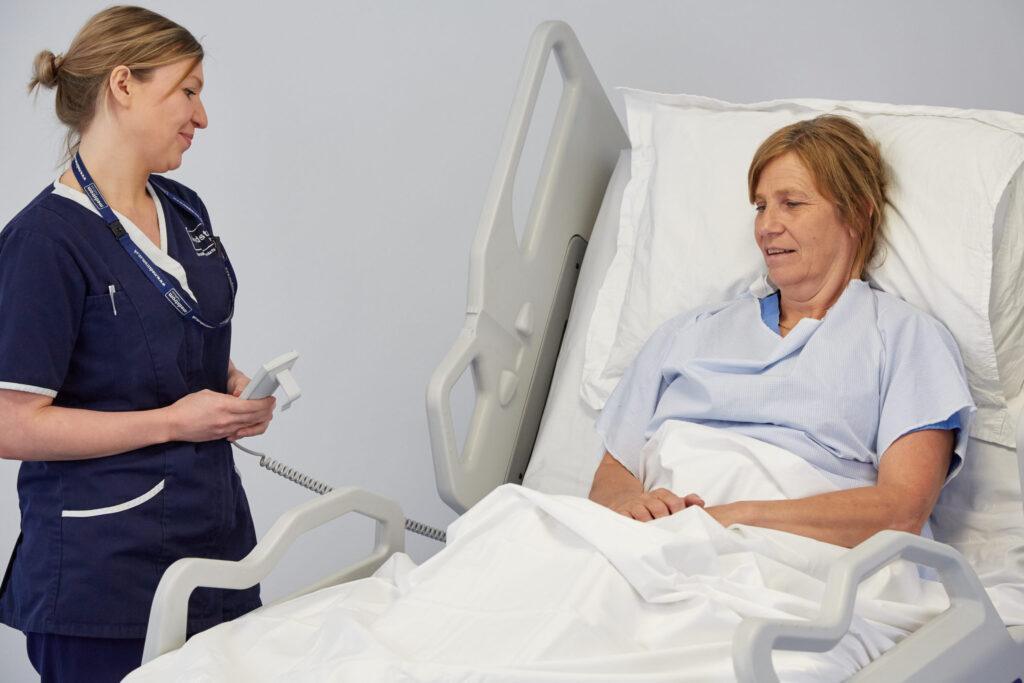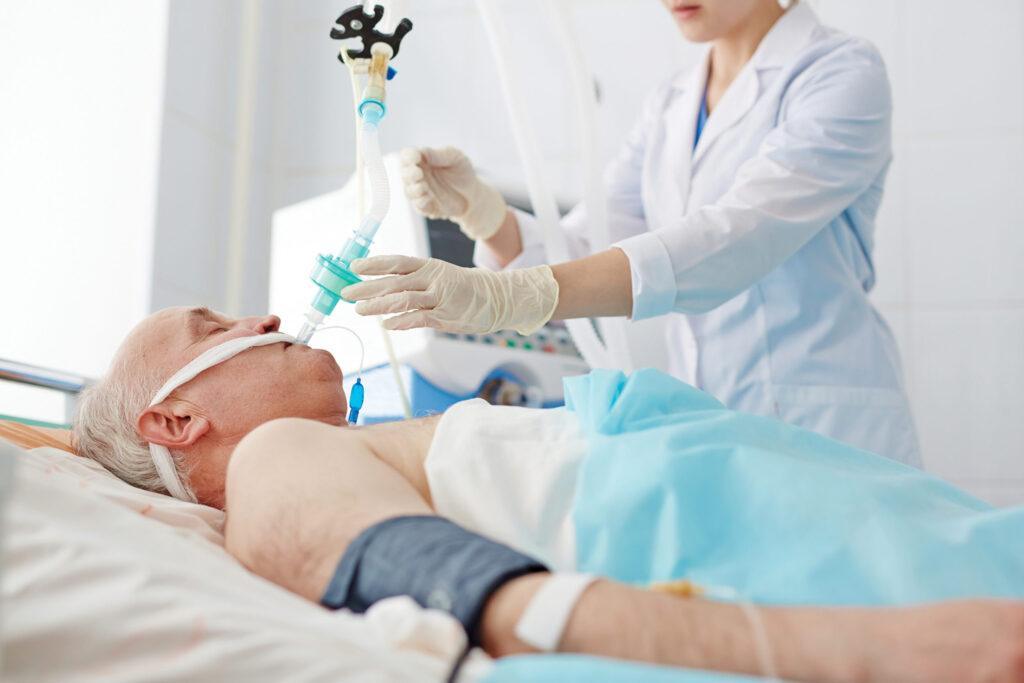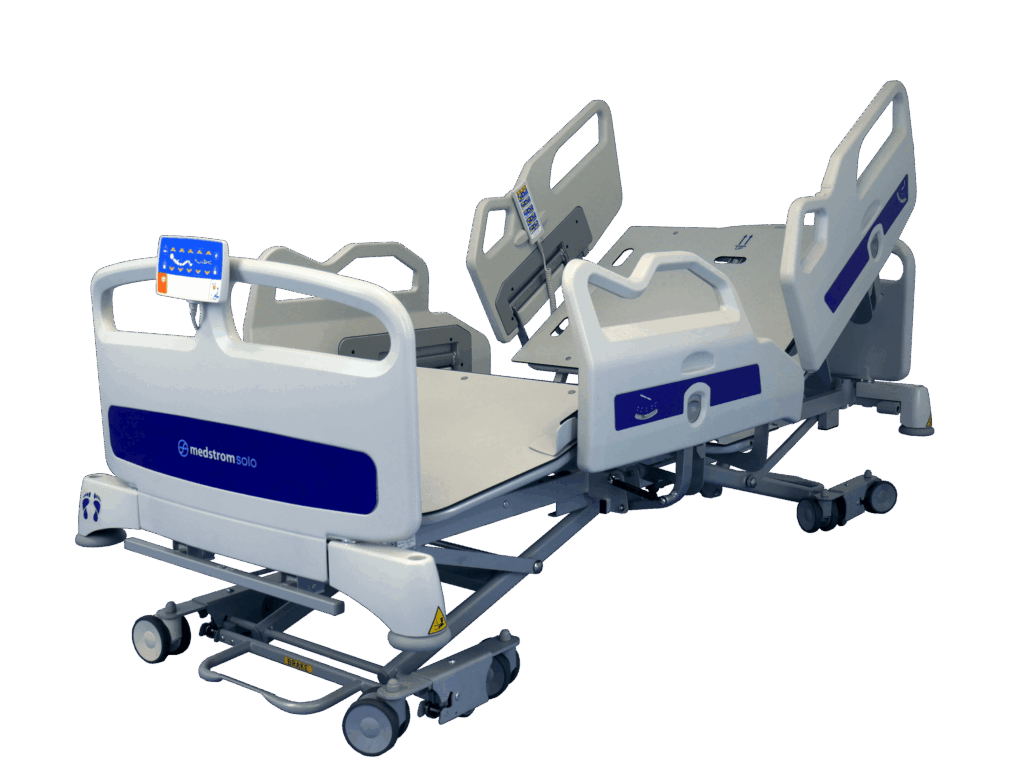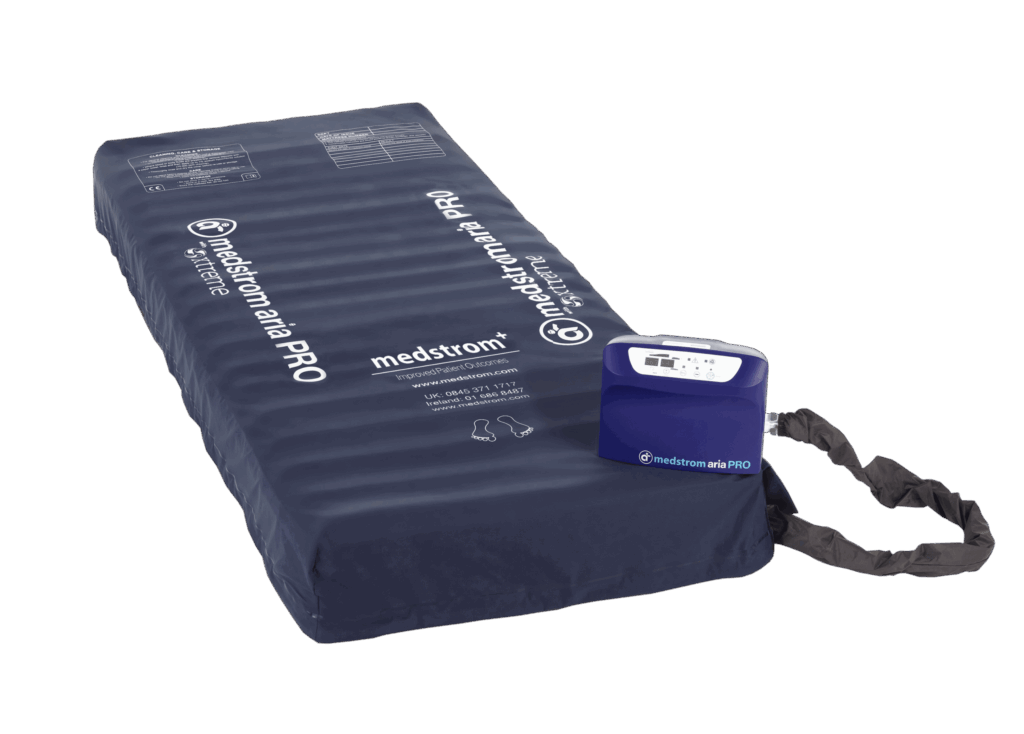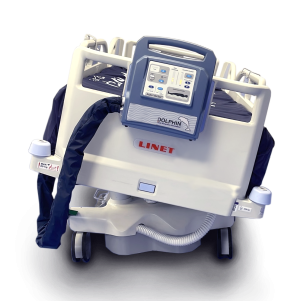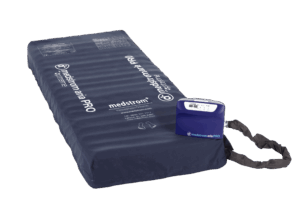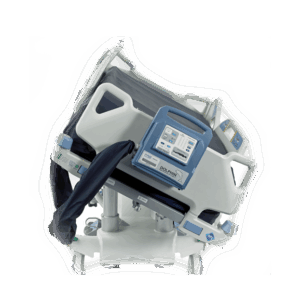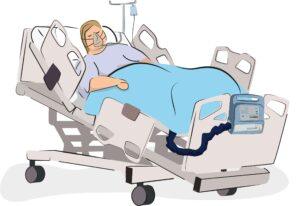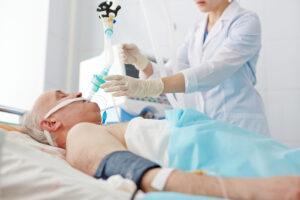
Eleganza 5 in 5. Part 3: Respiration
In the third in a series of five posts with accompanying videos focusing on how the Eleganza 5 bed can benefit patients and caregivers, we look at respiration.
We appreciate how busy you are and because of this, we’ve kept things short. It will take less than 5 minutes to either read this post or watch the video.
If you prefer watching to reading:
Or scan the QR code to watch on your phone:
Eleganza 5: Respiration – 5 Key Facts in 5 Minutes
To optimise your patient’s respiratory function, you should aim to increase tidal volume, maintain residual volume, and reduce respiratory tract infections. The Eleganza 5 bed can help to achieve all these objectives using its positioning capabilities.
1. Increase Tidal Volume
When we breathe, our rib cage rises up and out. Tidal volume is the amount of air that’s exchanged as we breathe, and this is normally about 500ml.1 78% of tidal volume is achieved by the movement of the rib cage up and out, and when we are supine, this drops by over half to about 32%. If a patient is in a scrunched position for too long, this can result in the development of long-term contractures and restrictive pulmonary disease.
2. Maintain Residual Volume
Residual volume is the amount of air left in the lungs after we have forced the air out. Typically, this is about a litre and a half, but when we are supine, or the lungs are restricted the residual volume decreases. This increases the risk of portions of the lungs collapsing.
3. Reduce Respiratory Tract Infections
Studies have shown that prolonged bed rest can increase the risk of respiratory tract infection. This is because it’s not as easy to cough in bed, with some people confined to bed unable to cough at all. This means that we can’t clear irritants in the lungs.
Pooling of secretions and mucus in the lungs occurs, which can lead to infection. Frequent repositioning can help to reduce that abnormal pooling of mucus in the lungs and reduce the risk of respiratory tract infection. We can either do this manually or use lateral tilt.
4. Reposition Using Lateral Tilt
To use the lateral tilt function on the Eleganza 5 bed, we can use either the button on the caregiver interface or the foot pedals. The movement of secretions can be visualised by a transparent model of the lungs with ball bearings in the bottom. The ball bearings, which represent secretions, move from side to side as the body is tilted laterally. This movement helps to prevent abnormal pooling.
5. Aid Diaphragmatic Excursion
To help your patient’s ribcage expand and move upwards and outwards, and the diaphragm to lower, it’s useful to put them into a full chair position. It will also help to stop scrunching and the associated risks.
In summary, you can increase tidal volume, maintain residual volume and reduce respiratory tract infections by using the lateral tilt function. Additionally, placing the patient in a full upright chair position will allow greater diaphragmatic excursion, which will help to increase lung capacity and improve oxygenation.
References
- Knight, J. et al (2018). Effects of bedrest 1: Introduction and the cardiovascular system. Nursing Times 114: 12, 54-57. Accessed online 20th May 2021.
